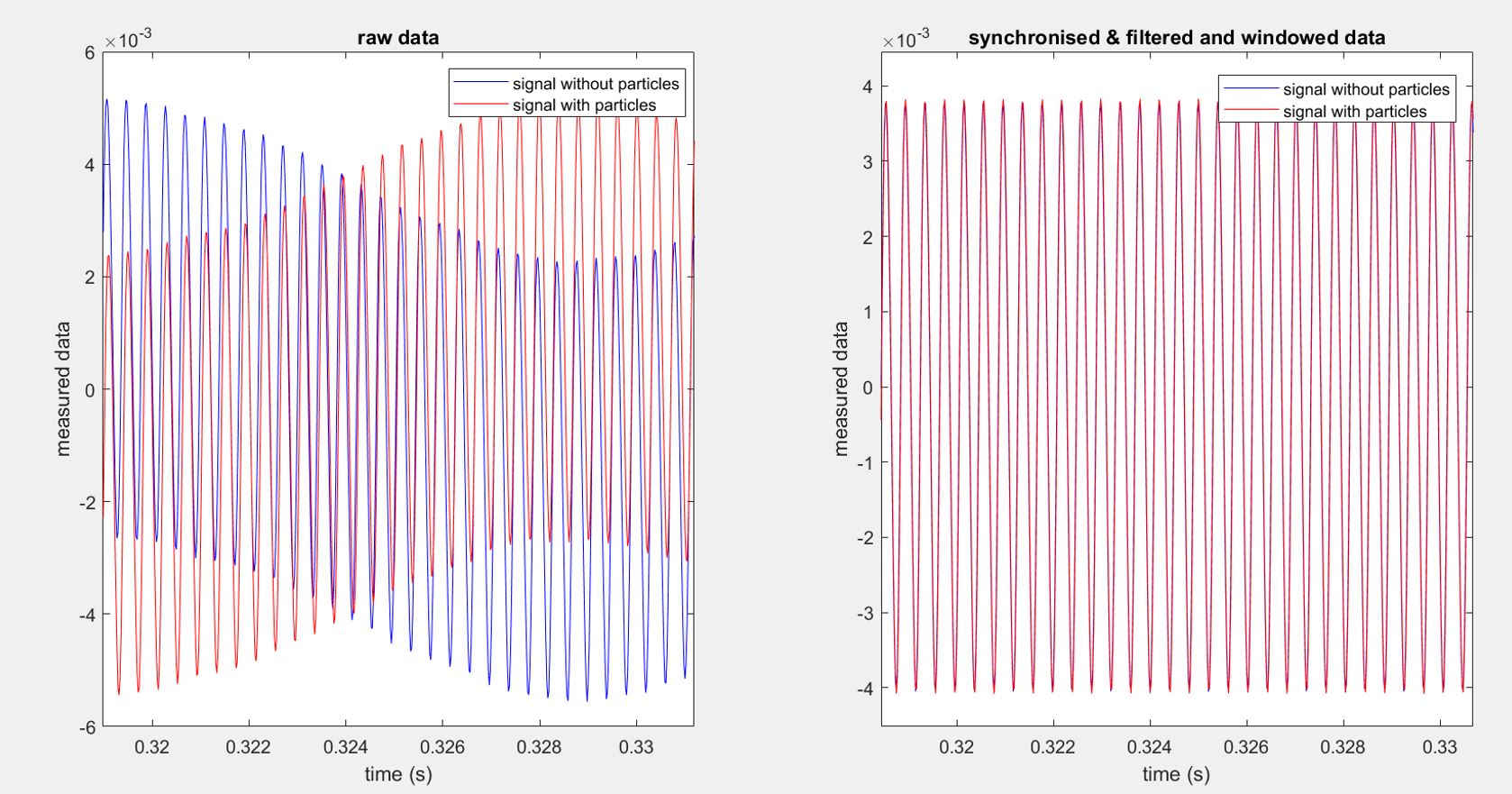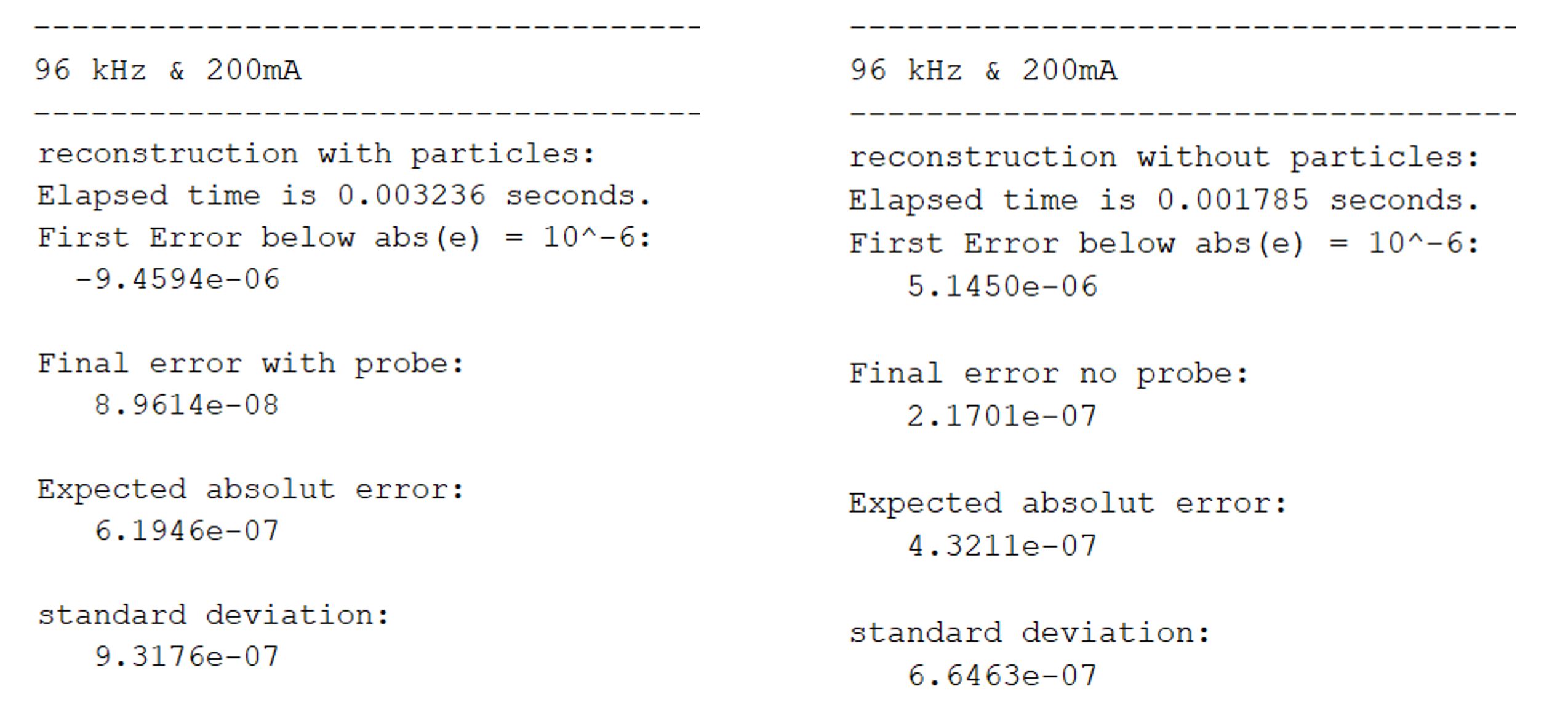Magnetic Cell Analysis
Motivation
The Institute of Materials Science is dedicated to the synthesis of human organs by cell cultures. The aim is to create a tissue lattice interspersed with cells. One problem that arises concerns the analysis of the tissue structure of the finished organ. For example, only the shell of the organ could be filled with cells. It is also conceivable that cavities have formed inside. To ensure visibility, a process is being developed whereby magnetic nanoparticles are introduced into the cells. Subsequently, the organ is to be exposed to an alternating magnetic field to measure the response of the particles.
As part of the Bachelor project, we used sample measurements of a cell sample and a cell-free sample to investigate different compensation methods with the aim of isolating the pure response of the cell sample from undesirable nonlinear effects. Specifically, we investigated the question of whether a reconstruction of the measurement data enables sufficiently accurate compensation.
Implementation
 The two measurements, carried out on a cell sample and a cell-free sample, were initially available as noisy, phase-shifted, and non-linearly distorted data sets. The data set of the cell-free sample contained the nonlinear response to the magnetic field to be compensated, which is caused, for example, by the intermediate amplifier. For this purpose, the data sets were first freed from the 50Hz noise, synchronized, and filtered. A Normalized Least Mean Square (NLMS) algorithm was then used to determine the amplitudes of the cosine and sine components of the 3rd harmonics of both signals. The algorithm first assumes given amplitudes and calculates the approximate amplitudes of the next time step from these and the difference to the actual amplitudes multiplied by an optimized step length. To determine the final magnitude of the error in the reconstruction, the error of the reconstruction and the standard deviation were determined simultaneously over a specified period. From the amplitudes, a cosine oscillation with phase offset and then the compensation is calculated by subtracting the two oscillations from each other.
The two measurements, carried out on a cell sample and a cell-free sample, were initially available as noisy, phase-shifted, and non-linearly distorted data sets. The data set of the cell-free sample contained the nonlinear response to the magnetic field to be compensated, which is caused, for example, by the intermediate amplifier. For this purpose, the data sets were first freed from the 50Hz noise, synchronized, and filtered. A Normalized Least Mean Square (NLMS) algorithm was then used to determine the amplitudes of the cosine and sine components of the 3rd harmonics of both signals. The algorithm first assumes given amplitudes and calculates the approximate amplitudes of the next time step from these and the difference to the actual amplitudes multiplied by an optimized step length. To determine the final magnitude of the error in the reconstruction, the error of the reconstruction and the standard deviation were determined simultaneously over a specified period. From the amplitudes, a cosine oscillation with phase offset and then the compensation is calculated by subtracting the two oscillations from each other.
For the comparison, the synchronized data is windowed, Fourier analysed, and the amplitude of the 3rd harmonics is determined. Subtracting these two results also provides compensation.

Result
The comparison of the two compensations and the error values shows that the compensation can be determined to six decimal places by reconstruction. Since the first significant digit is to the sixth decimal place, the result could be determined to at least one significant digit.
So, we could recognize that the beside the Fourier analyses the result of reconstruction method is good enough to give a good comparison and reference value. Furthermore, it gives multi-perspectivity.

Participating Student
- Maria Fleischhauer
Participating Supervisors
- Dr.-Ing. Mohammed Sadeghi (as mentor)
- Prof. Dr.-Ing Gerhard Schmidt (as chairholder)

 On behalf of the members of the Chair of Digital Signal Processing and System Theory, we would like to take this opportunity to wish you all a very Merry Christmas and a peaceful, restful winter break. We hope that this festive season brings you joy, relaxation, and cherished moments with your loved ones.
On behalf of the members of the Chair of Digital Signal Processing and System Theory, we would like to take this opportunity to wish you all a very Merry Christmas and a peaceful, restful winter break. We hope that this festive season brings you joy, relaxation, and cherished moments with your loved ones.